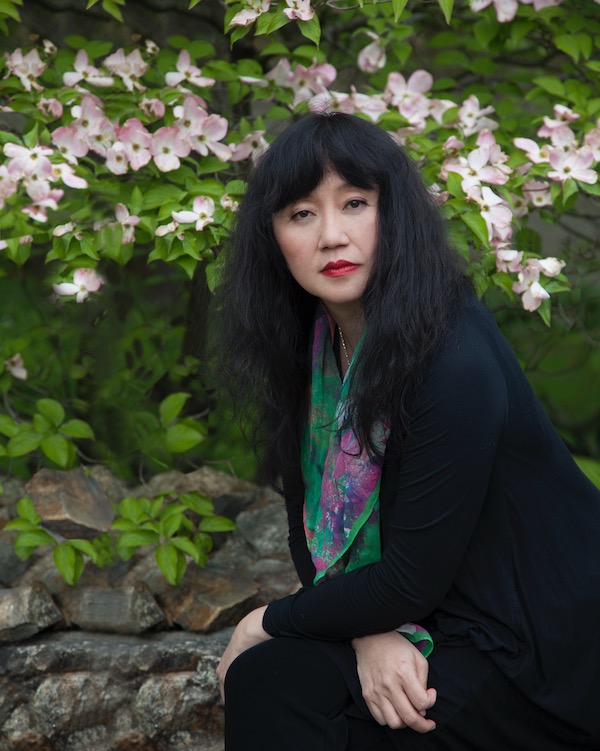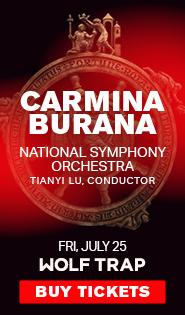Smart program highlights return of Wu Han, Chamber Music Society to Wolf Trap

Wu Han performed with colleagues of the Chamber Music Society of Lincoln Center Sunday at Wolf Trap. Photo: Christian Steiner
Wu Han became artistic advisor at Wolf Trap in 2018, and her programming and spirited presence invigorated the chamber music series that first season. Even when the pandemic closed down the Barns, her leadership steadied the institution in the two seasons that followed. During the lockdowns she presented streamed concerts accompanied by intriguing glimpses into the musicians’ lives during the lockdowns.
On Sunday afternoon Han returned to the Barns for her first live program of the new season, joined by regular collaborators from the Chamber Music Society of Lincoln Center. The meat and potatoes-style selections paired Johannes Brahms with a composer he championed, Antonín Dvořák, and extending the lineage, another whom Dvořák championed, Josef Suk.
Dvořák was represented by his Violin Sonatina, the last chamber music piece he completed during his sojourn in the United States in the late 19th century. Dvořák conceived this work for his two children to play: his 15-year-old daughter, Otilie, was a pianist, and his 10-year-old son, Tonik, played the violin. Although the technical demands are not great, there was plenty of material for Han and violinist Arnaud Sussmann to charm the ear.
Sussmann played with a restrained, demure tone, matched by a gentle accompaniment from the pianist, who deployed the soft pedal generously. This especially suited the plaintive slow movement, so popular with listeners that publishers sold it separately, under titles like “Indian Lament.”
Dvořák wrote this sonatina during his trip to Minneapolis, where he was conducting research on the opera he hoped to write, inspired by Longfellow’s epic poem The Song of Hiawatha. The composer’s private secretary recalled that Dvořák wrote down a theme for the second movement on his shirt cuffs as he viewed Minnehaha Falls. In the poem Hiawatha falls in love with a woman named Minnehaha, after this beautiful site in the headwaters of the Mississippi.
Rustic rhythmic vigor enlivened the scherzo movement, with coltish interplay between Sussmann and Han. The finale offered the chance for a little more showmanship, with Dvořák returning to allusions to Native American and African-American melodies, heard throughout the piece with snippets of the pentatonic scale and Scotch snap rhythms.
By contrast Suk wrote his Piano Quartet in A Minor when he was barely 17 years old and still a student at the Prague Conservatory. The influence of Dvořák, the teacher who heard the first movement and urged Suk to complete the work, is clear. Suk later married Dvořák’s daughter, Otilie, one of the dedicatees of the sonatina that preceded this work on the program, although sadly both she and Dvořák died within a year of one another not long after her wedding.
At the start of the first movement intonation was not in agreement among Sussmann, violist Matthew Lipman, and cellist David Finckel. Lipman consistently made the most beautiful sounds, as in the secondary theme of the exciting first movement. Finckel took the limelight in the slow central movement, with a less polished tone, accompanied by a curious buzzing sound, as if something, either paper or within the instrument, were resonating. Later in the movement, Sussmann and Lipman wove entrancing countermelodies around the cello, amid twilit twinkles from Han at the piano.
The closing third movement rocketed with more volcanic power, as all four musicians unleashed as much rough and ready sound as they could. In a brief interview with the musicians after intermission, Han described their approach to the Suk piece, the work of a teenage composer, as “with all the hormones raging.”
Nothing in the first half prepared the listener for the introspective refinement of the final work, the Piano Quartet No. 1 of Brahms, composed when he was still in his 20s. While Han remained largely in the background in the Suk piece, the keyboard’s greater role in the Brahms put her in the driver’s seat. Lipman continued to excel, taking the lead with rich tone in his solo moments in the first movement. Both Finckel and Sussmann responded with brooding intensity in their best playing of the concert.
The musicians gave a soft, expressive tension to the second movement, not only because of the mutes and soft-pedaling Brahms called for but in their overall approach. The sense of burgeoning emotion smoldered, not least in the soft pulsing of repeated notes that ran through much of the movement. Here and in the third movement, the interpretation remained on the slower side of the tempo possibilities, retaining an elevated dignity.
Tempo control made the third movement heroic and stately, with Han crushing the forte tutti passages with a wall of keyboard sound. The Romani temperament of the finale, Rondo alla Zingarese, came through in the daredevil tempo and explosive acceleration, with the sense of the lockdown cobwebs being cleared out of the musicians’ fingers. With her vibrant, virtuosic cadenza and bold orchestral sound, Han led the final charge to an exhilarating conclusion.
Baritone Will Liverman joins members of Chamber Music Society of Lincoln Center for a program of Spanish-themed music by Boccherini, Turina, Ravel, Shostakovich, Cassadó, and Sarasate 7:30 p.m. November 12. wolftrap.org

